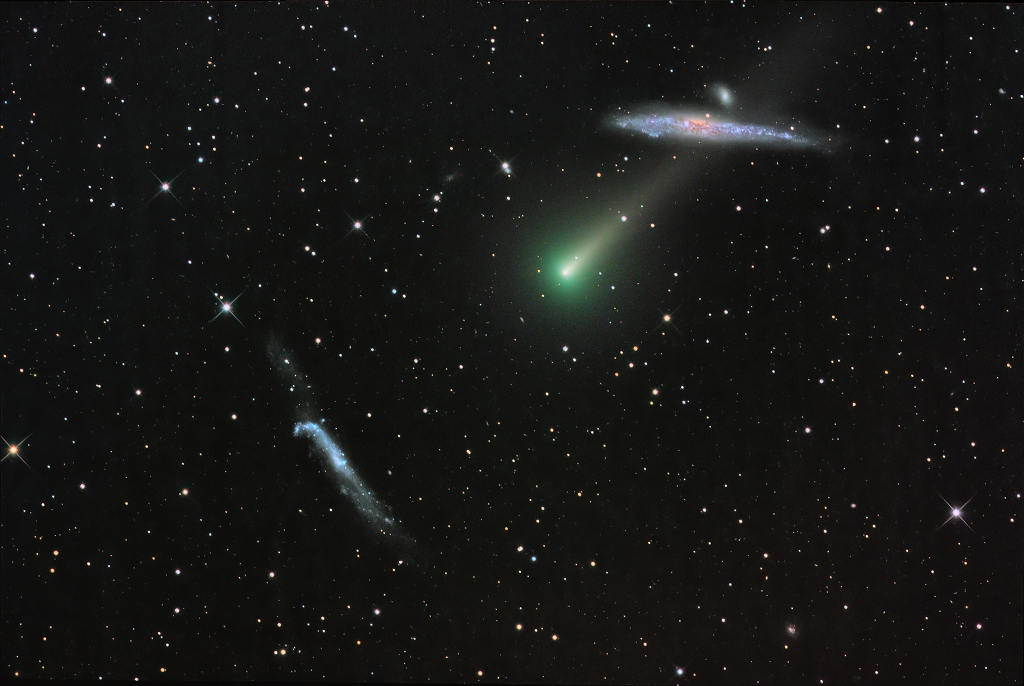伦纳德彗星和鲸鱼星系
(原标题: Comet Leonard and the Whale Galaxy)
2021-12-03
浏览次数: 182
11月24日,伦纳德彗星(C/2021 A1)扫过北方黎明前的天空,在这张复合望远镜图像中被捕捉到两个星系之间。这颗彗星布满灰尘的彗尾呈绿色彗发,似乎正瞄准NGC 4631(上图)的中心,NGC 4631也被称为鲸鱼星系。当然,NGC 4631和NGC 4656(下图,又名曲棍球棒)是距离我们2500万光年远的背景星系。在那一天,彗星距离我们美丽的星球大约6光分。伦纳德彗星离地球最近(离金星更近)的距离还在后面,它将在12月变得更亮。对于双筒望远镜和小型望远镜来说,这颗彗星已经是一个很好的对象,它很可能不会回到太阳系内部。它的近日点,或最接近太阳的地方,将在2022年1月3日。
查看原文解释
Sweeping through northern predawn skies, on November 24 Comet Leonard (C/2021 A1) was caught between two galaxies in this composite telescopic image. Sporting a greenish coma the comet's dusty tail seems to harpoon the heart of NGC 4631 (top) also known as the Whale Galaxy. Of course NGC 4631 and NGC 4656 (bottom, aka the Hockey Stick) are background galaxies some 25 million light-years away. On that date the comet was about 6 light-minutes from our fair planet. Its closest approach to Earth (and even closer approach to Venus) still to come, Comet Leonard will grow brighter in December. Already a good object for binoculars and small telescopes, this comet will likely not return to the inner Solar System. Its perihelion, or closest approach to the Sun, will be on January 3, 2022.
© Gregg Ruppel
